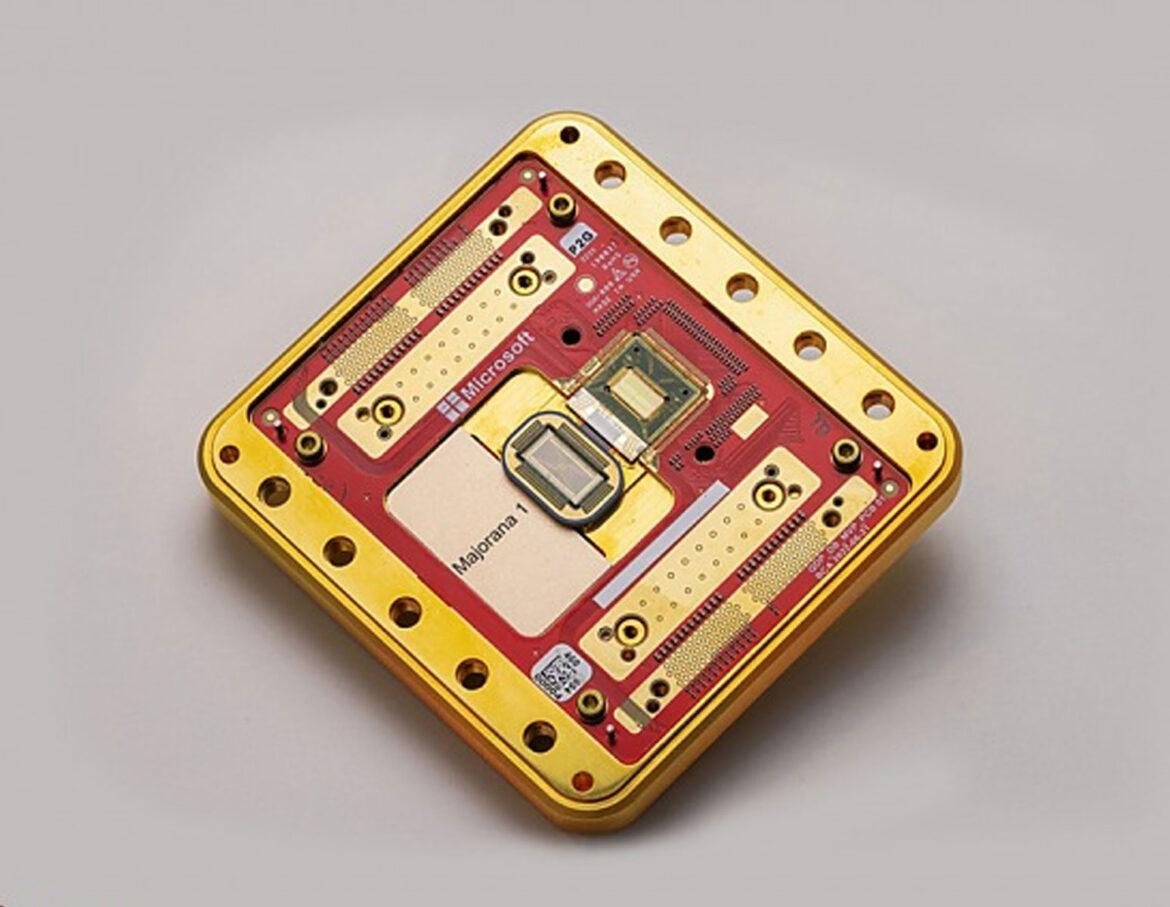Microsoft has introduced a groundbreaking quantum chip, Majorana 1, which the company believes could help address real-world computational challenges within the coming decades.
The tech giant claims to have successfully observed and controlled a Majorana particle, a theoretical subatomic entity first predicted a century ago. “Our team at Microsoft has successfully observed and controlled a subatomic particle that was only theorized until now,” said Krysta Svore, a Microsoft technical fellow, in a company video.
The Majorana 1 chip is designed to manipulate an entirely new state of matter, pushing the boundaries of quantum computing. Microsoft’s approach centers on topological qubits, which could dramatically improve the stability and reliability of quantum processors—one of the biggest challenges facing the field today.
The Race for Error-Free Quantum Computing
Quantum computers hold immense promise for revolutionizing fields like cryptography, drug discovery, and complex simulations. However, current quantum machines suffer from high error rates due to qubits’ extreme sensitivity to environmental disturbances.
To address this, Microsoft has focused on engineering topological qubits, which are believed to be intrinsically more resistant to errors. These qubits rely on a new type of material called a topoconductor, which behaves as both a semiconductor and a superconductor.
“A hundred years ago, mathematicians predicted one such new state of matter: the topological state. Since then, researchers have been looking for a very specific, very useful quasi-particle within it—the Majorana particle,” Svore explained. “Last year, we were able to observe it for the first time. And this year, we’re able to control it.”
How Majorana 1 Works
The Majorana 1 chip employs an H-shaped superconducting nanowire made from indium arsenide, connecting two topoconducting wires. Magnetic fields and superconductors then manipulate Majorana quasiparticles into existence at the ends of these wires.
In classical superconductors, electrons form Cooper pairs at low temperatures. Introducing an unpaired electron creates an excited state, where the energy difference between states represents binary information (ones and zeros).
In Microsoft’s new chip, an electron is shared between two Majorana quasiparticles in a delocalized state. The company claims its precision is so high that it can differentiate between one billion and one billion and one electrons in a superconducting wire.
This capability, Microsoft argues, makes Majorana-based qubits far less prone to errors than conventional quantum computing approaches.
A Quantum Transistor for the Future
Microsoft technical fellow Chetan Nayak likened the company’s approach to reimagining the fundamental building block of computing:
“We took a step back and said, ‘OK, let’s invent the transistor for the quantum age. What properties does it need to have?’”
According to Nayak, the key breakthrough came from refining the materials stack that enables the stability and operation of these new qubits.
Still a Long Road Ahead
Despite Microsoft’s ambitious claims, the company acknowledges that its results are still preliminary. In its published research, Microsoft stated that the current findings do not definitively prove the presence of topological quantum states.
“As we perform more types of measurements, it will become harder to explain our results with non-topological models,” Nayak told Nature.
While the breakthrough is promising, the scientific community remains cautious. As with nuclear fusion, practical quantum computing has long been described as being “just a few decades away.”
Still, if Microsoft’s Majorana 1 proves viable, it could represent a paradigm shift in computing—bringing the world one step closer to error-free, large-scale quantum machines.



